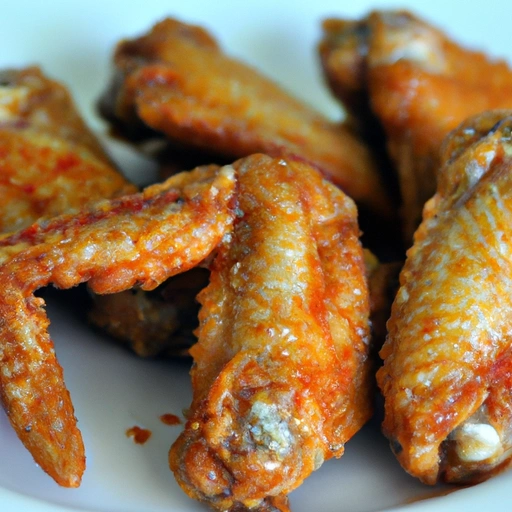Chicken Wing
Description

Chicken wings are a popular food ingredient known for their tender meat and versatility in cooking methods. Often enjoyed for their crispy skin and juicy interior, they can be seasoned in countless ways to achieve a variety of flavors. Chicken wings are typically sold by weight, with measurements provided in pounds (lb) in American units and grams (g) or kilograms (kg) in European and Avoirdupois (Azjan) units. For example, a typical serving size of chicken wings is about 4 to 5 wings, which can weigh around 0.5 to 1 pound (227 to 454 grams).
Common uses
Chicken wings are a favored ingredient in appetizers, main dishes, and even as a snack during sporting events or gatherings. They're often served with a side of vegetables, like celery or carrots, and a dipping sauce such as blue cheese or ranch dressing. In many cultures, wings are also a staple food during celebrations and festive occasions.
Nutritional value
Calories
A typical serving of chicken wings, which is about 4 to 5 wings, contains approximately 400 to 500 calories.
Protein
Chicken wings are a good source of protein, with about 22 to 30 grams of protein per serving.
Fat
The fat content in chicken wings can vary, especially depending on preparation, with a typical serving containing 20 to 30 grams of fat.
Carbohydrates
Chicken wings themselves are low in carbohydrates, but the value can increase if they are breaded or served with sugary sauces.
Vitamins
Chicken wings provide vitamins such as B6 and B12, which are important for energy metabolism and maintaining healthy blood cells.
Minerals
They also offer minerals like phosphorus and selenium, essential for bone health and antioxidant functions, respectively.
Health benefits
Consuming chicken wings in moderation can contribute to a balanced diet. They are rich in protein, which is vital for muscle repair and growth. The presence of vitamins and minerals supports various bodily functions, making chicken wings a nutritious addition to meals when prepared healthily.
Potential risks
Due to their high fat and calorie content, particularly when fried or covered in high-sugar sauces, chicken wings can pose health risks like weight gain if consumed in excess. It's also important to be cautious of potential allergens in sauces and coatings.
Common recipes
Popular chicken wing recipes include Buffalo wings, barbecued wings, and honey garlic wings. They can also be found in stews and soups in various cuisines.
Cooking methods
Chicken wings can be baked, grilled, smoked, fried, or slow-cooked. Each method offers a different texture and flavor profile.
Pairing with other ingredients
Flavorful pairings include classic hot sauce, savory BBQ, tangy lemon pepper, and sweet teriyaki. Wings are often complemented by creamy dips and fresh veggies.
Summary
Chicken wings are a versatile and widely enjoyed ingredient across the globe. They can be cooked in numerous ways and flavored to suit a range of taste preferences. Although they are rich in protein and offer certain nutritional benefits, mindful consumption is advised due to their fat content. When enjoyed as part of a balanced diet, chicken wings can be a delightful addition to many meals.